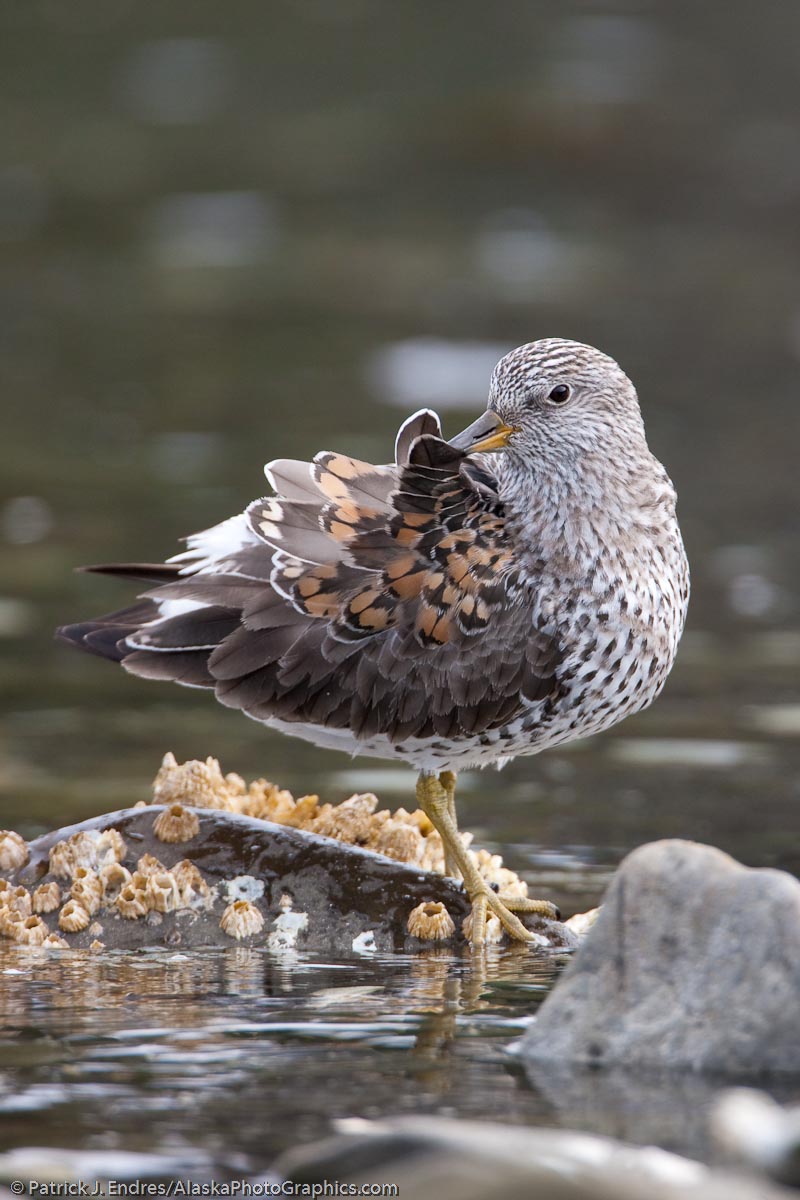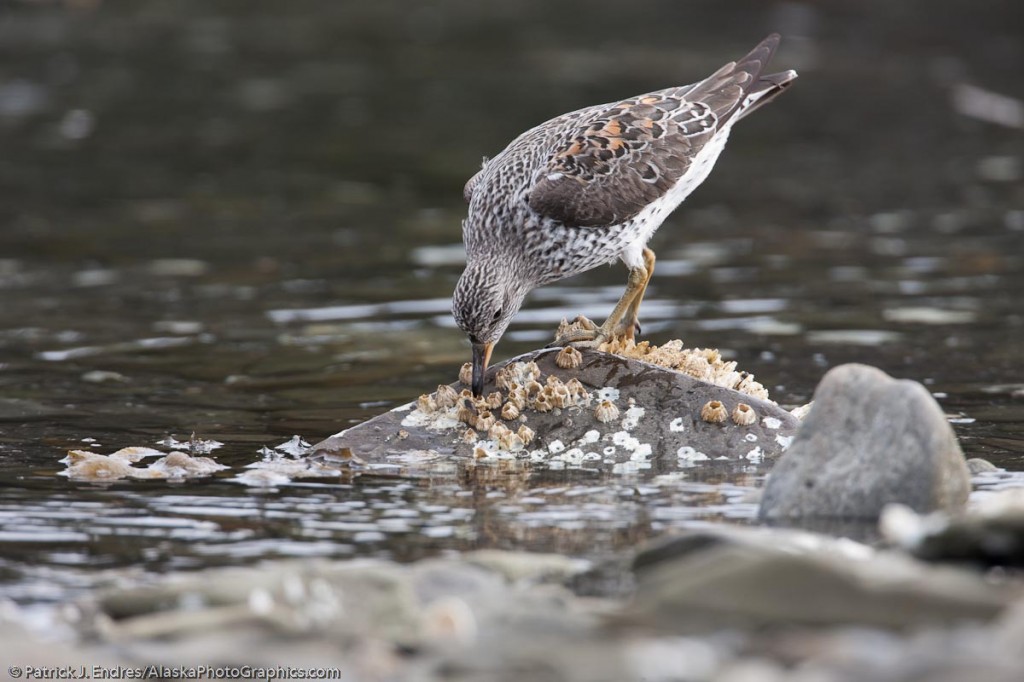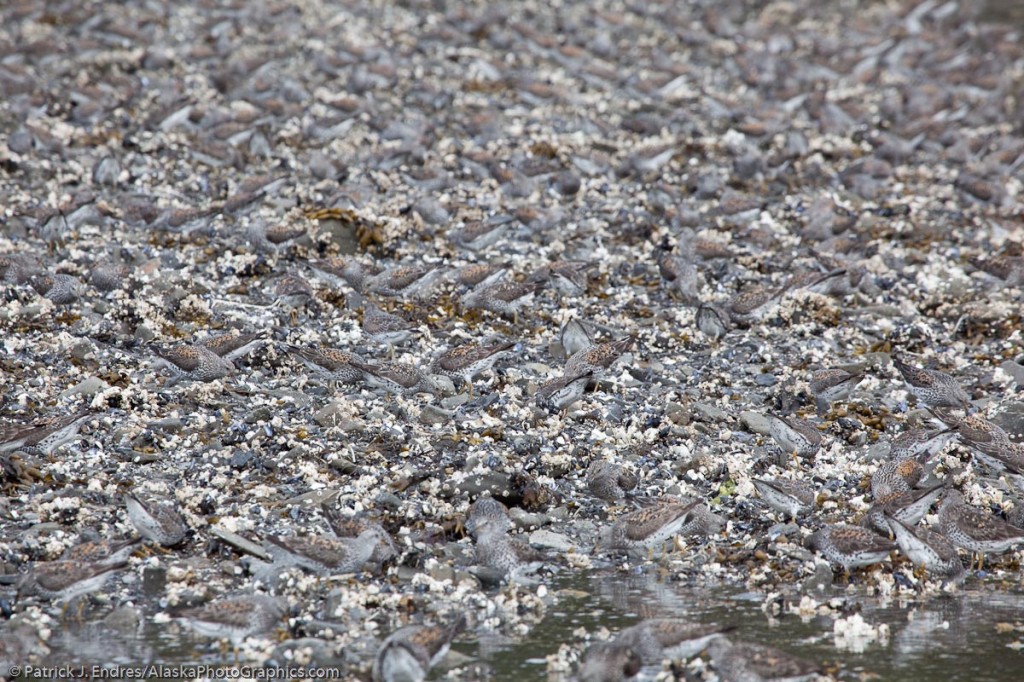
Surfbird preens feathers, Montague Island, Prince William Sound, Alaska
If you are a bird, the condition of your feathers means everything. And so the process of preening is a continual one. It is also at this stage that a bird can ingest oil and other contaminants that may adhere to their feathers in polluted waters.

Surfbird feeding on small mussels
This Surfbird (Aphriza virgata), was one of thousands along the shores of Montague Island in Prince William Sound. The birds stop along these shores during their spring migration north to feed along the rich intertidal zone. Surfbirds like the little mussels and other biota at the water’s edge. I took the two above frames laying on the beach with my 500mm lens and a 1/4 converter.

Surfbirds, perfectly camouglaged with the beach
What was amazing to me was the perfectly cryptic coloration of the birds. If they were not moving, you would never know they were on the beach, blending in perfectly with the stones, barnacles, and seaweed. Believe it or not there are well over 100 birds in this picture.






